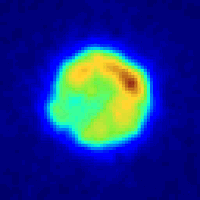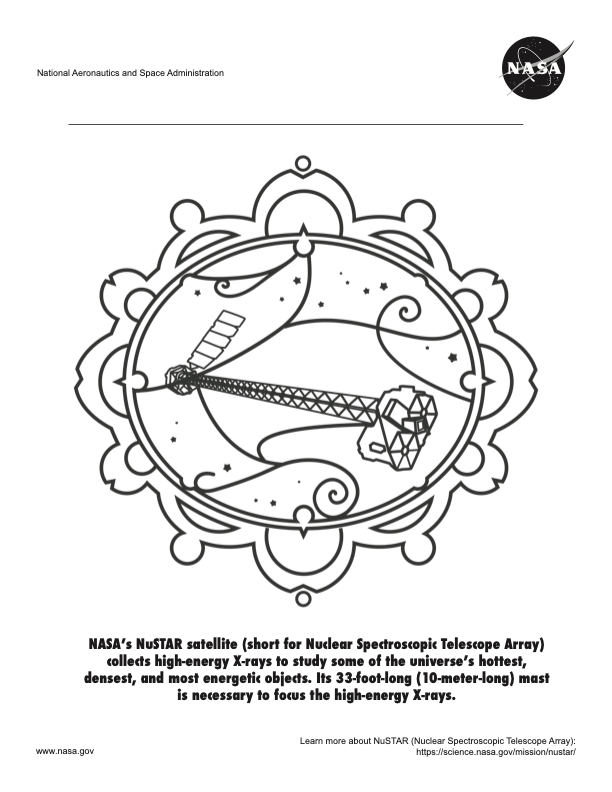Nested mirrors
This nested, multiple-mirror approach to X-ray astronomy has been used on several missions. The two best examples were the second High Energy Astronomy Observatory (HEAO-2, also called the Einstein Observatory; HEAO-1 and -3 carried different kinds of detectors) launched in 1978. Germany followed a similar plan with its Roentgen Satellit (RoSat).
 |
 |
X-ray views of Tyco's supernova remnant (discovered in 1572) were taken with the low-resolution (left) and high-resolution (right) imagers on the Einstein observatory. AXAF provide as great an improvement over the Einstein high-resolution imager.
To see fainter objects in greater detail, AXAF employs larger mirrors with shallower grazing angles than Einstein or RoSat in order to capture more, higher energy X-ray photons. An important design consideration for AXAF was to be able to see objects at energies up to 10 keV where we believe that a range of interesting activities can be seen. The shallower angles also results in a longer focal length. AXAF's smallest mirror - 63 cm (24.8 in.) in diameter - is larger than Einstein's biggest - 58 cm (22.8 in.). The larger diameters of AXAF's mirrors also mean that it will take images and spectra of stars faster than Einstein or RoSat -- or see fainter objects than its predecessors.
How will AXAF perform compared to its predecessors? First, a little geometry.
Astronomers often work with numbers smaller than 1 degree: arc-minutes (60 arc-min = 1 degree) and arc-seconds (60 arc-min = 3,600 arc-sec = 1 degree). That's pretty abstract, so use this comparison: the Moon's apparent (or angular) diameter is about 1/2 degree - 30 arc-min or 1,800 arc-sec (it varies a little as it orbits the Earth).
We measure a telescope's sharpness, or resolving power, in arc-seconds. Einstein's resolving power was 4 arc-sec, meaning it could see details about 1/450th the apparent size of the Moon. AXAF will have a resolution of 0.5 arc-sec, so it will see details about 1/3600th the apparent diameter of the Moon, or about 8 times finer than Einstein.
The angles of incidence on AXAF range from 52 arc-minutes on the outer mirror down to 27 arc-minutes in the inner. In ordinary terms, that means that the angle between the incoming X-rays and the inner mirror will be less than the apparent diameter of the Moon.
That shallow angle also introduces yet another challenge to AXAF's builders. The mirror shapes have to be not just nearly perfect, but nearly perfectly clean. A certain amount of dust is inevitable. But if the mirrors have too many dust particles, the effect would be like looking through - well, a dust bunny. If you look at a clean computer screen you will see a few specks of dust. Look edge-on and the dust will appear much worse, so AXAF's mirrors were cleaned to the equivalent of having no more than one speck of dust in an area the size of an average computer screen.
The same is true of molecular contamination. A few traces are expected, but we need to measure them exactly so astronomers can remove these "system errors" from images and data.
Go here to read about calibrating the mirrors, or return to AXAF main story.
Updated Feb. 4, 1997
Authors: Dave Dooling
Curator: Bryan Walls
NASA Official: John M. Horack






























